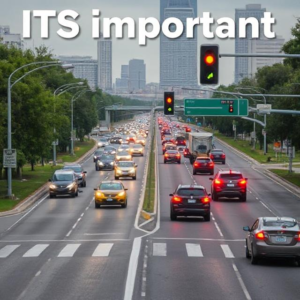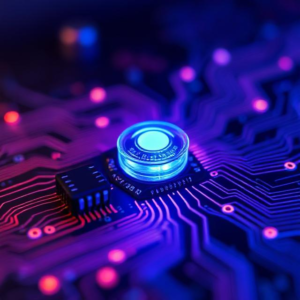Intelligent Transportation Systems (ITS) is a term used to describe various technologies that improve the safety, efficiency, and convenience of transportation. It’s like using technology to make transportation smarter, faster, and safer.

1. Traffic Management:
ITS helps monitor and control traffic flow. For example, smart traffic lights that adjust based on the flow of traffic, helping reduce congestion and improving travel times. This can include things like sensors on roads to detect traffic conditions.
2. Real-Time Information:
ITS systems provide real-time updates about traffic, road conditions, accidents, and weather. Think of apps like Google Maps or Waze, which give you the fastest route based on live traffic data. This is also helpful for drivers to avoid road closures or delays.
3. Vehicle-to-Vehicle Communication:
This is where cars communicate with each other using technology. For example, one car might send a signal to the one behind it to warn of a sudden stop or an accident ahead. This helps reduce the chances of accidents and improves safety.
4. Public Transport Systems:
ITS is also used to improve public transport, such as buses or trains. It can help track where buses are in real time, letting passengers know when the next bus is coming or if there are delays.
5. Parking Management:
Finding parking can be a hassle, right? With ITS, sensors in parking lots or garages can show you available spaces. Some cities even have apps that guide you directly to an empty spot, saving you time and reducing traffic congestion caused by people searching for parking.
6. Driver Assistance Systems:
ITS is behind features in cars that help drivers, like automatic braking, lane-keeping assistance, or adaptive cruise control. These features use sensors and cameras to help prevent accidents and make driving easier.
7. Smart Infrastructure:
ITS uses smart technology built into roads, bridges, and tunnels. For example, roads might have sensors that measure traffic volume, or weather sensors that detect icy conditions and send alerts to drivers in real-time.
Why is ITS important?
- Safety: It can prevent accidents by giving drivers real-time information or warning about hazards ahead.
- Efficiency: It reduces traffic jams and helps everyone get where they need to go faster by optimizing traffic flow.
- Environmental Benefits: By improving traffic flow and reducing congestion, ITS can also help lower pollution from idling cars.
ITS makes transportation more convenient, safe, and efficient by using technology to connect drivers, vehicles, roads, and traffic management systems. It’s like giving transportation a “brain” to make decisions that improve the entire system.











